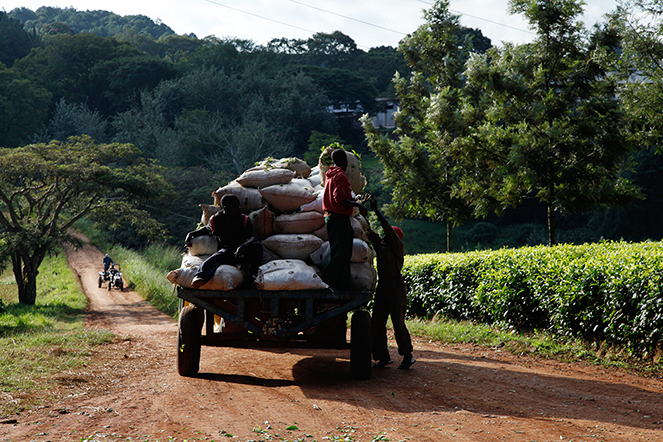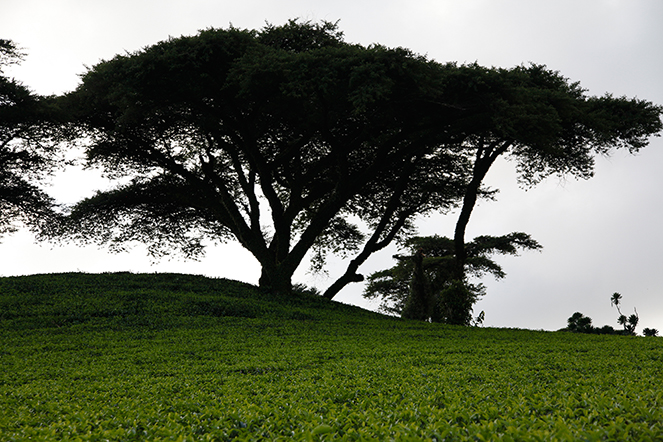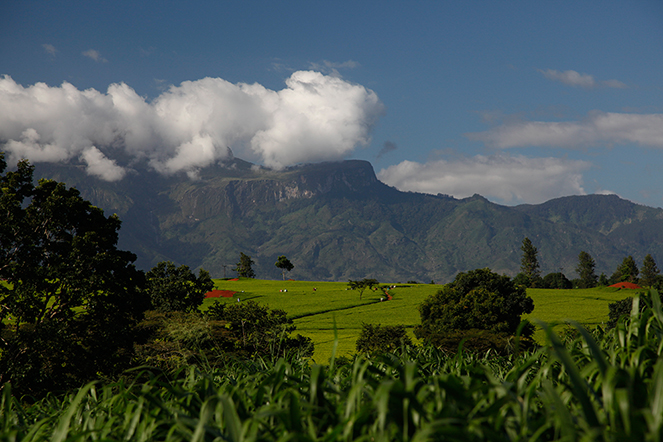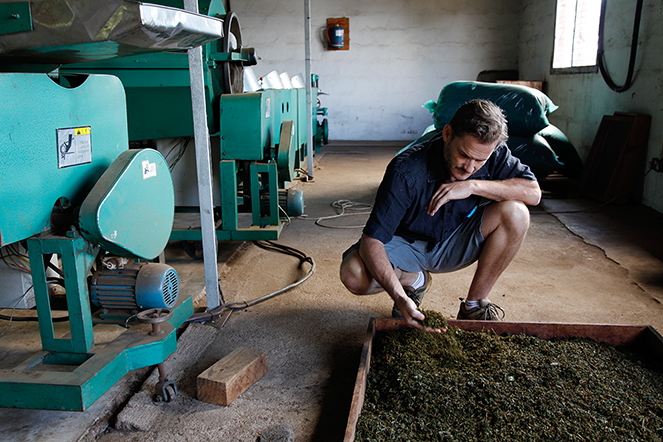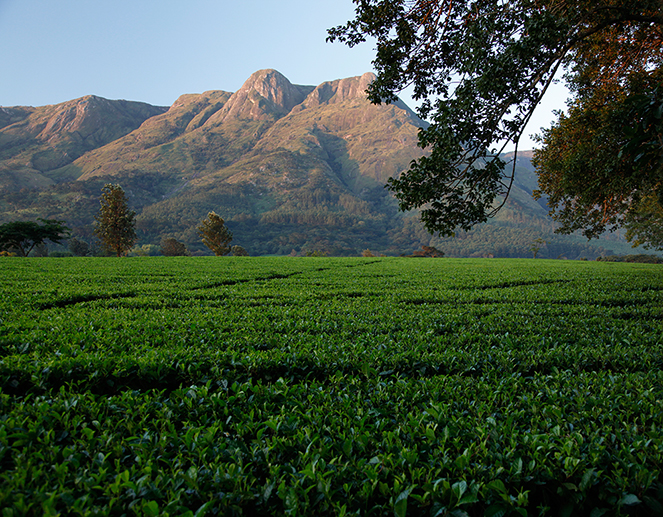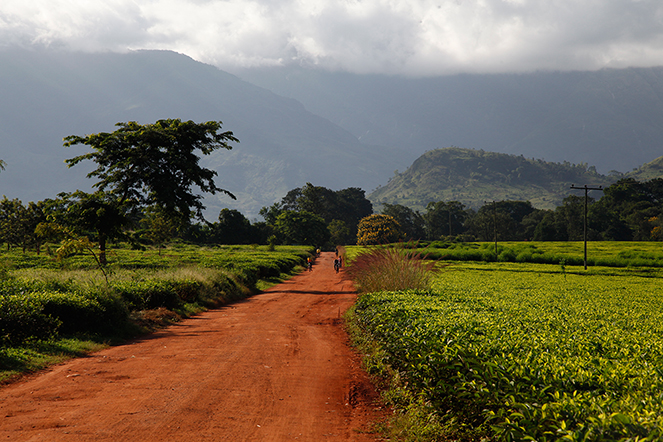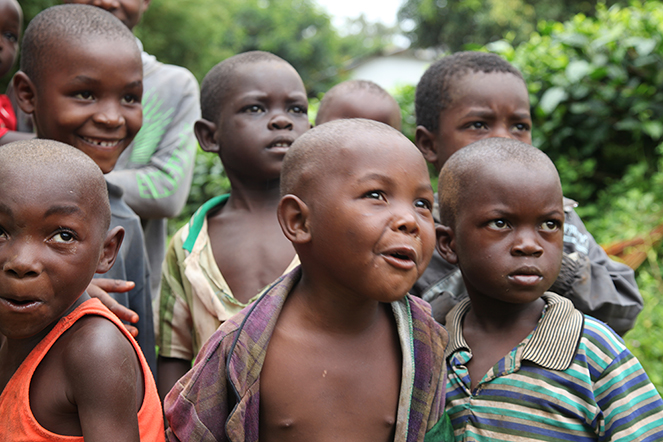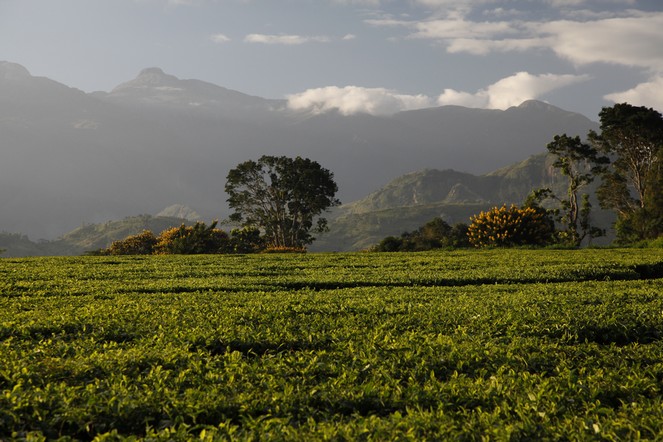There must be as little delay as possible from the time the tea is harvested to the moment it reaches the building for processing. This is because the fresh leaves, wrapped in bags for transporting, immediately start to ferment with the heat and humidity.
Malawi
Tea plants shaded by trees
In some countries, tea plants require cover. It depends on the climate. Strong sunshine dries out the ground, whereas tea plants love humidity. In addition, tea plants don’t like wind. The trees used differ from country to country but they tend to belong to the Leguminosae family. Pictured here is a fine Acacia abyssinica specimen.
See the world in a different way
Many of you spend hours in front of a computer screen. However, the world cannot be reduced to a few inches. To give you a different view of the world, I propose this photo, which you can use as wallpaper for your screen. For people with a sedentary lifestyle, it is recommended to take some time out to stretch, relax, walk a little. I also recommend you enjoy looking at this landscape while drinking your daily cup of favourite tea.
Alex, pioneer of “grand cru” teas from Malawi
The existence of very good teas in Malawi is down to Alex. He is the only one to produce them. All the plantations in this country produce tea industrially, and harvest it with shears, but this was not right for Alex. He loves tea. He was born in Malawi, grew up on his grandfather’s plantation, and tea has been his whole life. So he researches, he documents the methods of making dark teas, green teas, semi-oxidised teas, white teas. He seeks out particular tools needed to produce them, from China or Taiwan. He makes teas in his own way, in his own style, with his terroir, his cultivars.
From Alex, I have chosen his Satemwa Dark, his Zomba Green and his Small Holders Black tea – produced through his association formed with small producers, and currently the best black tea from Africa. I recommend it wholeheartedly.
At the foot of Mount Mulanje
In Malawi, tea grows in the south. We are here at the southern end of the Great Rift Valley, at the foot of Mount Mulanje. They say the views are incredible from the top; I can well imagine it, and intend to make the journey one day. In the meantime, I think the view from the bottom isn’t bad either, both vegetal and mineral. This expanse of green relaxes the eyes. It’s quite an idyllic place to work.
From one earth to another
If I talked to you about “terre battue” in French – literally “beaten earth”, the name given to the clay surface of tennis courts – you’d think I was talking about the French Open, taking place at the moment just outside Paris. Not at all. This brick-coloured ground actually makes me think of the tea fields, those of Malawi for example. The path is like a scar cutting through the fresh green expanse of the tea plants. It’s a million miles from the courts of Roland-Garros. And without the crowds. There, silence reigns.
Walking around the plantations
I never visit a tea plantation without taking a walk around the surrounding villages. It’s a chance to observe how people live, to meet the locals, perhaps to sit on someone’s doorstep and chat. And to be an object of curiosity for groups of children, who are often laughing!

